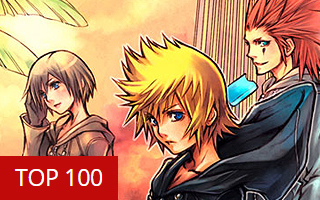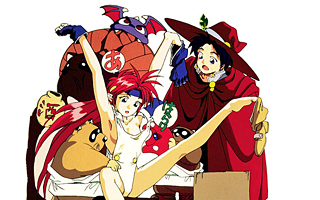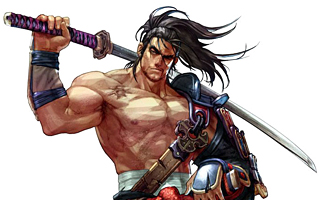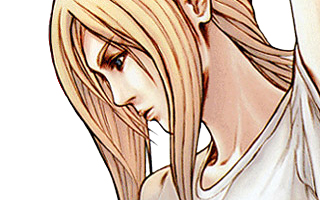FM-7
Top 10 Best FM-7 Games of All Time!
First released in 1982, the Fujitsu Micro 7 (more commonly known as the FM-7) was a stripped down version of the business-class FM-8 line. Even though it was a lower-cost model, the FM-7 actually had a more advanced sound synthesizer than the FM-8. This helped foster a strong following in the hobbyist market, and the FM-7 saw more success than the machine it was based on. The FM-7 competed with the NEC-8801 and the Sharp X1 in Japan, but its hardware is more comparable to the RadioShack TRS-80 Color Computer. Several FM-7 models were released in the years that followed – including the FM-New 7 and the FM-77. The release of the FM-77 AV in 1985 was especially significant, as it was the first 8-bit computer that could display more than eight colors at a time. For the purpose of this list, we’re going to be looking at the entire FM-7 line. The platform was home to a plethora of visual novels and adventure games built to specific tastes, but the games on this list are relatively easy to digest. We’ve already taken a look at the FM Towns (which succeeded the FM-7 line in 1989), but it’s always fun to turn back the clock.
10
Valis
1987

Mugen Senshi Valis is a side-scrolling platform game with an anime flare. If you’re a fan of magical girl IPs like Sailor Moon, then Valis will be right up your alley. The game focuses on a schoolgirl named Yuko who is given the legendary Valis sword by a goddess queen. Unfortunately, the sword came with the responsibility of defending the Earth from invading forces. The Valis series developed quite a legacy over the years, but the first entry was a little rough around the edges. The game had some nice cutscenes and a cool soundtrack, but the level designs made no sense and it was difficult to navigate through the game. I had no idea what I was doing at first, but I came to appreciate the randomness in a strange way. When the adventure begins, Yuko is fighting against the backdrop of a typical Japanese city. By the end of the game, she’s taking down giant monsters in trippy outer-space environments. I’ll concede that the series got better over time, but the first Valis is still worth checking out.
9
Mappy
1986

A side-scrolling action game from Namco that first hit the arcades in 1983, Mappy follows the exploits of a police-mouse who has the daunting task of entering a cat’s house to retrieve stolen goods. The goods in question consist entirely of household electronics and Mona Lisa knockoffs, but retrieving them is easier said than done since the premise is protected by a gang of cats. Fortunately, players are able to navigate through the bizarre house with the help of conveniently-placed trampolines that let them reach higher stories. It’s also possible to stun your feline foes by opening doors and creating shockwaves. Like many home versions of Mappy, the house only has five stories instead of six, but the basic concept is the same. Sadly, the FM-7 version isn’t as colorful as the arcade original, and the excessive interlacing was really oft-putting. The sprites are adorable, however, and I’m always up for some good old fashioned animated hijinx. When it comes to mice, I much prefer cartoons to the real deal.
8
Thexder
1985

Thexder is a creative action game starring a robot who can transform into a jet with a push of a button. The game’s side-scrolling maze-like levels were a novelty in 1985, and the ability to switch between two different modes was undeniably cool. The ship form allowed players to navigate through tight corridors while the robot form was your go-to for dealing with enemies. The game used an auto-aiming system which would automatically target every enemy on screen and divide your firepower between them. Using your shield would deplete energy from your robot, however, so you couldn’t mindlessly shoot down enemies from a distance. Your laser would sometimes target enemies that were hidden behind walls, and you had to put up with a lot of tedium if you wanted to progress through the adventure. It wasn’t a perfect game by any means, but I appreciated the fast, arcade-like feel. Game Arts ported the game to many different platforms after its initial PC-8801 release, and Thexder sold in excess of a million copies by 1990. Sierra On-Line brought the game to American PCs, and my introduction to the game was on the Tandy 1000. I was happy to discover that the FM-7 version was remarkably similar. (The FM-7 and the Tandy versions of Thexder even ran at the same resolution.) Thexder was the perfect game for anyone who grew up watching Transformers or Macross, and it feels like a precursor to Metroid or Turrican in many regards. It also features a great rendition of Beethoven’s Moonlight Sonata!
7
Woody Poco
1987

Woody Poco is a Japan-only action game that could be likened to the early Goemon titles. During the game, players assume the role of a wooden doll named Poco who wants to live in harmony with humans. Poco can buy gear, sleep at hotels, gamble, and bribe other characters. He can even steal items from stores, but his appearance will be altered in the process and shops will stop doing business with him. The game mechanics are surprisingly deep for the era. Poco needs to eat to prevent hunger, shops are only open at certain times of the day, and the seasons even change in accordance with the in-game clock. The game has many dungeons and side-tunnels to explore, and Poco can acquire an assortment of items to assist in combat and exploration. The game even shows some creativity with respect to its difficulty settings, and those looking for an easier experience can lower the difficulty simply by choosing to play as a girl at the beginning of the adventure. Woody Poco was never released outside of Japan, but it’s worth checking out if you like colorful adventure games. If nothing else, the game was a nice showcase for the FM-77 AV’s expanded color palette.
6
Flappy
1984

Flappy is a relatively unknown game from dB-SOFT that first appeared on the Sharp X1. The game follows a delightful mole named Flappy on his quest to gather up precious stones. Moving these stones is not easy, however, and you’ll have to exercise some strategic muscles as you shift rocks out of the way in order to clear a path through each level. The stages are filled with wandering enemies, and Flappy can stun them with sleeping mushrooms or crush them outright with large boulders. If he’s not careful, Flappy can end up being crushed himself! In a sense, gravity is Flappy’s biggest point of concern throughout his adventures. The game was directly inspired by Sega’s Pengo, and I’d recommend it to anyone who enjoyed Boulder Dash. There are 200 stages to complete, and the game is a lot more challenging than the earlier levels suggest. You have to approach each stage like a puzzle, but the proverbial pieces are always in plain sight. Flappy is another one of those obscure Japanese games that didn’t get nearly as much attention as it deserved.
5
Space Harrier
1987

Sega’s Space Harrier was a revolutionary game that helped establish the “rail shooter” sub-genre. The influence of Yu Suzuki’s masterpiece can be seen in StarFox, Sin and Punishment, and Kid Icarus: Uprising among other titles, and it even inspired PlatinumGames founder Hideki Kamiya to enter the industry. The game takes players into a surreal world that’s composed of brightly-colored landscapes and populated by myriads of fantastical enemies. The basic premise is to destroy all your foes while simultaneously dodging projectiles and other obstacles. As one of the first arcade games to use 16-bit graphics and pseudo-3D sprite scaling, Space Harrier was too ambitious for most 8-bit computers of the era. The FM-7 version isn’t as smooth or as colorful as the arcade original, but its head and shoulders above what we saw from the PC-8801 and Sharp X1 versions. It’s easily one of the most technically impressive games on the FM-7, and I was taken aback by how large some of the enemies were. There are countless ways to play Space Harrier at home, but the FM-7 version was a more faithful conversion than most of its contemporaries.
4
Galaga
1985

The video game industry changed over night after Taito released Space Invaders in 1978. In the years that followed, countless companies released space-themed shooting games that required players to repel hordes of enemies. Many of these games were uninspired and derivative, but Galaga made an effort to push the genre forward. The graphics were more colorful, the attack patterns were more complicated, and the game required more strategy. Enemy forces could potentially capture your ship during the game, and this gave you the opportunity to subsequently rescue the ship and create a dual fighter with double the firepower! Galaga wasn’t as revolutionary as Space Invaders (few games are), but it’s the best shooter of its era. The FM-7 version is somewhat more claustrophobic than the arcade original due to its horizontal aspect ratio, and it’s noticeably slower than the Sharp X1 version even though they were both handled by Denpa. It’s still perfectly playable, however, and it’s one of the most faithful arcade ports on the FM-7.
3
Silpheed
1988

It’s not as iconic as Galaga or as influential as Space Harrier, but Silpheed is my favorite shooter on the FM-7. (It was actually a FM-77 release, if you want to get technical.) The premise of the game is to destroy waves of enemy fighters and eventually save the world from an all-out invasion. Along the way, players will be able to upgrade their weapons and shields by earning points and collecting power-ups. Vertically-scrolling shoot ’em ups were a dime-a-dozen in the 1980s, but Silpheed stood out from the pack due to its use of flat-shaded polygons. The polygonal graphics gave Silpheed more depth than most shooters had, and this was especially apparent when the game would take you inside enemy fortresses. If nothing else, it was nice to see a high-profile shooter that was designed specifically for the home market. The soundtrack was awesome, too! I wasn’t introduced to Silpheed until the Sega CD remake was released in 1993, but I had a lot of fun with the original when I discovered it many years later.
2
Door Door mkII
1985

In 1982, a small publishing company called Enix sponsored a national programming contest in Japan. Three hundred games were submitted, but the top prize when to Koichi Nakamura for a quirky puzzle game called Door Door. Nakamura would go on to bigger things as the director of Dragon Quest, but Door Door was a success in its own right and sold in excess of 200,000 copies. The premise of the game revolves around a cap-wearing creature named Chun who is being relentlessly pursued by a group of aliens. The objective is for Chun to trap the aliens behind sliding doors, and players have to think ahead in order to lure their enemies through the stages. The various aliens each have their own patterns, and this gives the game an added layer of complexity. Door Door featured 50 stages, and they became increasingly complicated as the game progressed. Door Door mkII boasted 50 brand new stages (for a total of 100) and the music was a lot easier on the ears, but it wasn’t as successful as the original game. If Door Door or its follow-up had been released outside of Japan, they’d be regarded as classics today.
1
Ys II: Ancient Ys Vanished
1988

If you’re a frequent visitor to this site, you’re probably familiar with the Ys series. For the uninitiated, Ys is a series of action RPGs from Nihon Falcom that are famed for their accessibility. In lieu of pressing a button to swing a sword, players attack their enemies by running into them like a linebacker. The fast-paced combat makes grinding for experience feel more like an old school arcade action game than an RPG. The premise isn’t overly elaborate, but the setting is immersive. As you uncover ancient civilizations and mow down myriads of monsters, you’ll be treated to some of the best background music of the era. The first two Ys were released on the FM-7, but they flow into each other and feel like two parts of the same game. I highly recommend both titles, but I prefer the sequel for many reasons. It’s longer, there’s less backtracking, the dialogue is more interesting, and the addition of magic spells gives you more ways to approach battles. Ys II has been mentioned on several other lists already, and it deserves the credit. It was a genre defining game that’s still fun today.





Do you agree with this list? Let us know what you think by leaving a comment below. Your opinion matters!